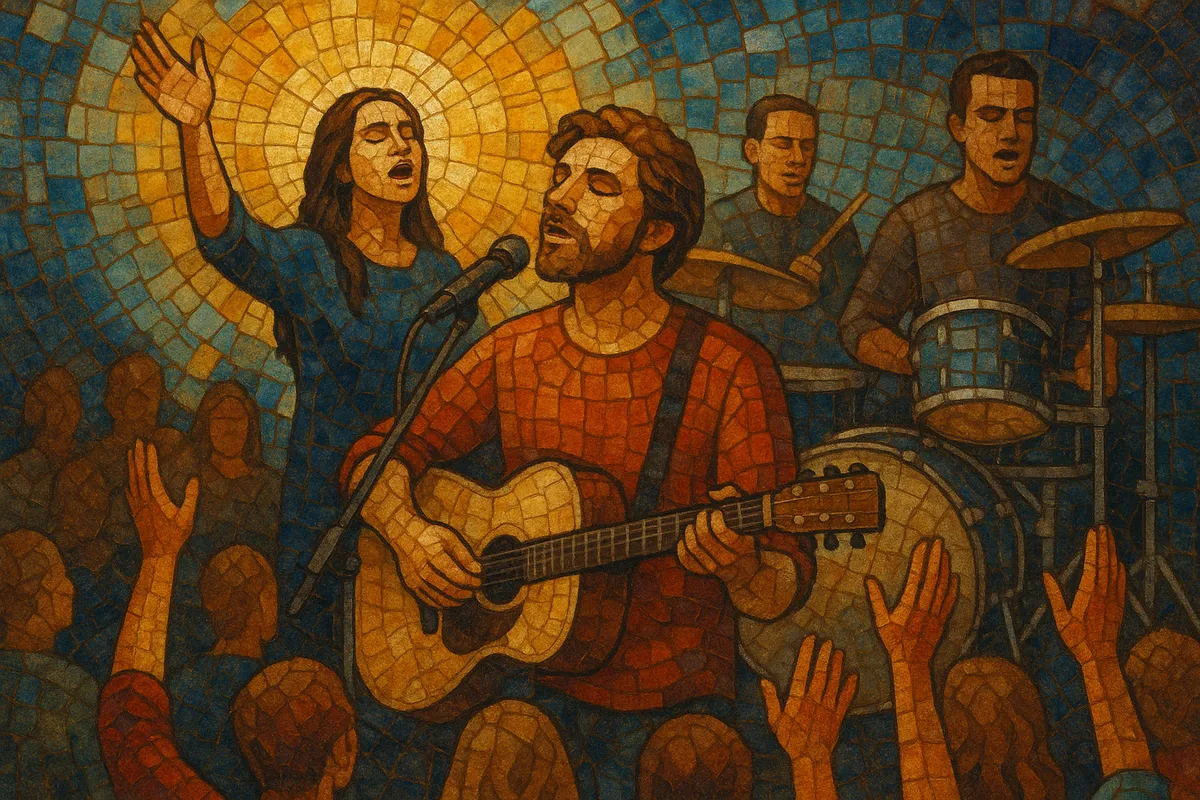
Praise & worship is a strand of contemporary Christian music designed for congregational singing in church services, conferences, and worship gatherings.
It typically features a modern band (vocals, acoustic/electric guitars, keyboards, bass, and drums), singable melodies within a comfortable range, and lyrically direct, "vertical" address to God. Songs favor clear hooks, memorable choruses, and simple harmonic movement (e.g., I–V–vi–IV) to enable wide participation.
Stylistically, it draws on gospel, contemporary Christian music, and pop/rock balladry, often building dynamically from intimate verses to anthemic, hands-raised choruses. The genre has spread globally through church movements, recordings, and licensing (e.g., CCLI), shaping the sound of modern worship across denominations.
Praise & worship, in its contemporary form, emerged from the U.S. Jesus Movement and Charismatic Renewal, where informal gatherings adopted guitars and choruses alongside traditional hymns. Early publishers and ministries such as Maranatha! Music and Vineyard popularized simple, Scripture-infused songs designed for group singing.
Through the 1980s and 1990s, labels and church-based collectives (e.g., Integrity/Hosanna!, Vineyard Music, Delirious?) standardized the modern "praise set"—a sequence of thematically connected songs that rise in intensity. Projected lyrics, amplified bands, and repetition for congregational engagement became common. Australia’s Hillsong catalyzed a global sound with polished, pop/rock-influenced arrangements and prolific annual recordings.
Megachurch networks and conferences (e.g., Passion) mainstreamed worship anthems worldwide. Songwriters such as Chris Tomlin and Matt Redman emphasized accessible keys/ranges, call-and-response hooks, and bridges that could be extended for spontaneous worship. Licensing (CCLI) and live albums facilitated rapid adoption across denominations and languages.
Collectives such as Bethel Music and Elevation Worship blended ambient textures, modern pop production, and cinematic builds. The repertoire diversified—acoustic ballads, 6/8 swells, and stadium-sized 4/4 anthems—while translations and regional teams (Latin America, Africa, East Asia) localized the style. Digital platforms (YouTube, streaming) and social lyric videos accelerated global song circulation, making a small set of anthems ubiquitous in weekly services.
The genre’s strengths—memorable hooks, congregational accessibility, and emotional dynamics—also invite critique: over-reliance on repetition, narrow thematic range, and commercial pressures. Still, praise & worship remains the dominant liturgical music format in many evangelical and charismatic contexts worldwide.

